History of the business
Energy &
Marine
Machinery
The Energy and Marine Machinery business started manufacturing marine steam turbines in 1907 (Meiji 40) as the marine machinery department of Kawasaki Dockyard. Since then, our business has branched out while expanding our product areas from the sea to land. In our energy sector, we produce industrial gas turbines, as well as other equipment such as gas engines, natural gas compression facilities, and steam turbines for home power production. In our marine machinery sector, we have produced various marine propulsion devices, including marine diesel engines that have over 100 years of history.
-
1907/ Meiji 40
Manufacture begins on steam turbines
We started manufacture of steam turbines using Curtis marine turbine construction technology from the International Curtis Marine Turbine Company (U.S.).
-
1911/ Meiji 44
Entering into technical tie-up agreement with MAN (Germany) for the manufacture of two-stroke diesel engines
We entered into a technical tie-up agreement with MAN (Germany) for the manufacture of two-stroke diesel engines.
-
1915/ Taisho 5
Delivery of the first Brown-Curtis steam turbine for the Haruna cruiser
We entered into a technical tie-up agreement with John Brown & Company (U.K.) for the Brown-Curtis turbine, and the first unit was installed on the battlecruiser Haruna, which was built in 1915.
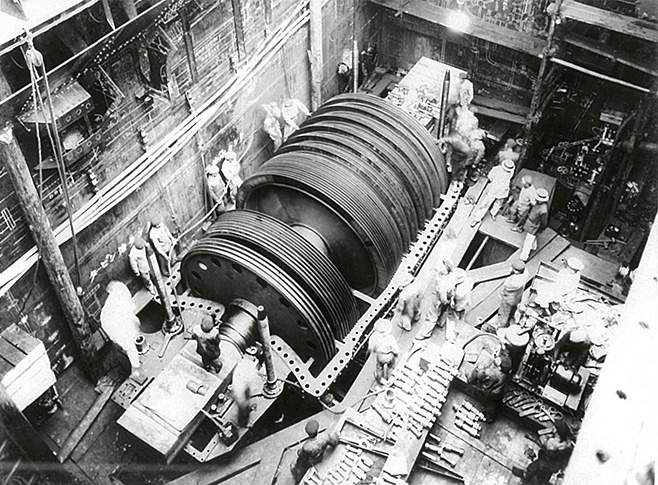
Loading the turbine onto the Haruna
-
1920/ Taisho 10
Introduction of technology to construct the Fullagar diesel engine
We introduced manufacturing technology for the Fullagar diesel engine from Cammell Laird (U.K.), and the first unit was installed on the Florida Maru, which was built in 1925.
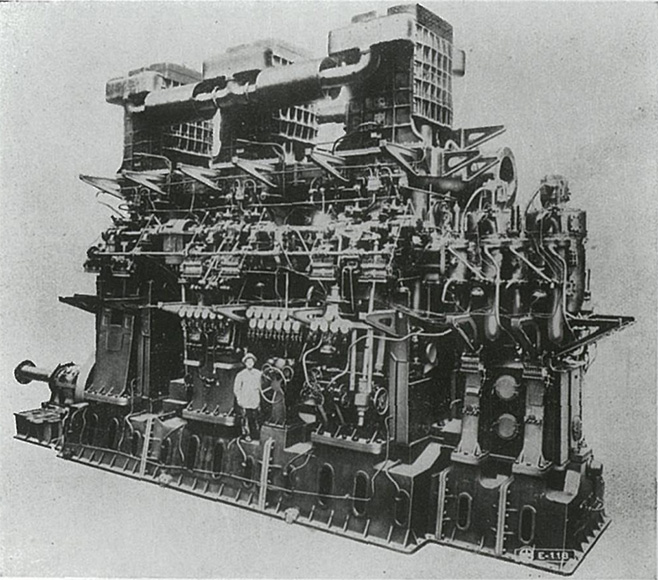
Fullagar diesel engine
-
1955/ Showa 30
Entering into technical tie-up agreement with Escher Wyss & Cie. (Switzerland) for a controllable pitch propeller
We started construction on a controllable pitch propeller from 1956.
-
1958/ Showa 33
Opening a high-speed diesel factory in Akashi (later known as the Akashi-Minami Works)
We opened a medium-sized high-speed diesel factory (later known as the Akashi-Minami Works) in a corner of the Kawasaki Aircraft Co., Ltd. premises.
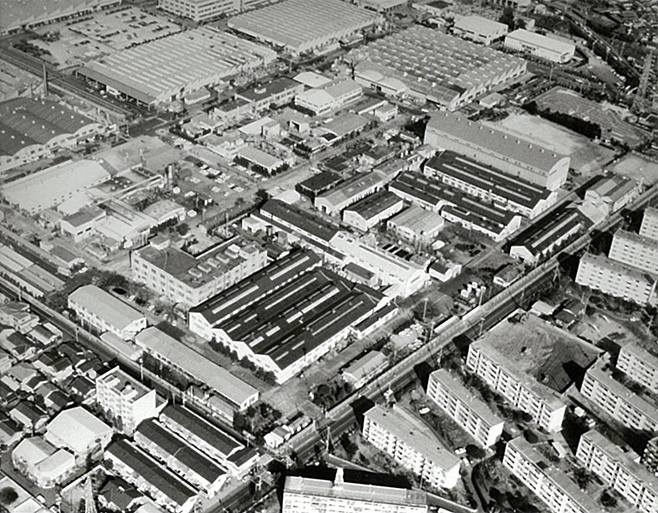
Akashi-Minami Works
-
1964/ Showa 39
Development of the U-Plant, a high-performance, high-efficiency marine steam turbine main engine plant
We completed the first U-Plant marine steam turbine and held an unveiling event.
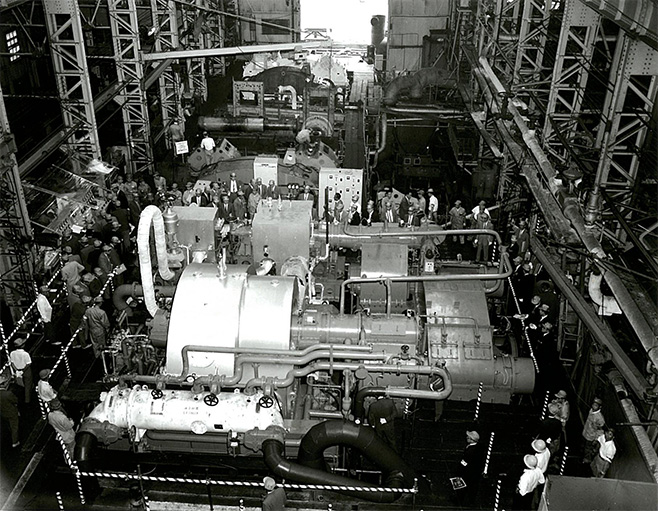
Unveiling of the first U-Plant marine steam turbine
-
1969/ Showa 44
Manufacture starts on centrifugal compressors
We entered into a technical tie-up agreement with Cooper Bessemer (U.S.) for a centrifugal compressor in 1968, and began production of centrifugal compressors.
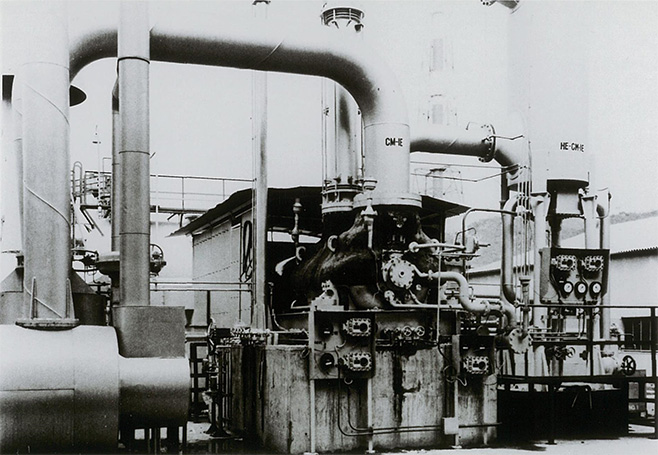
First CB compressor
-
1971/ Showa 46
Delivery of first side thruster developed by Kawasaki
We delivered the first Kawasaki side thruster developed by our company. Since then, we reached a total of 3000 units produced in 2007, and 5000 units produced in 2015.
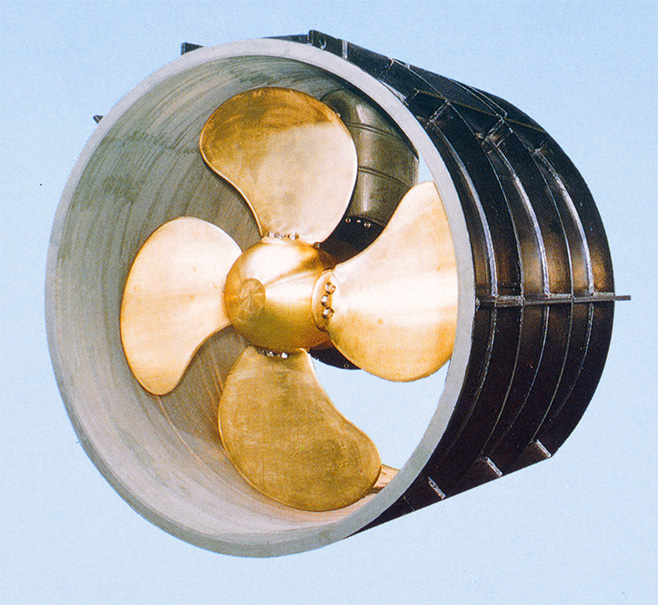
KT-B series side thruster
-
1976/ Showa 51
Completion of Japan’s first gas turbine generator produced entirely in Japan
We completed the Japan’s first gas turbine generator produced entirely in Japan, the PU200 (power output of 150 kw)
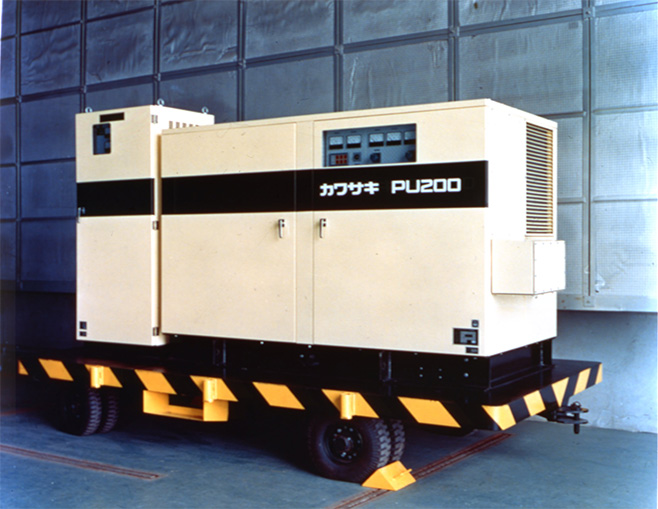
PU200 gas turbine generator
-
1980/ Showa 55
Completion of Japan's first gas turbine main engine for warships
In 1971, we entered into a technical tie-up agreement with Rolls-Royce (U.K.) for the manufacture of marine gas turbines. In 1980, we completed Japan's first gas turbine main engine for the 52DD warship.
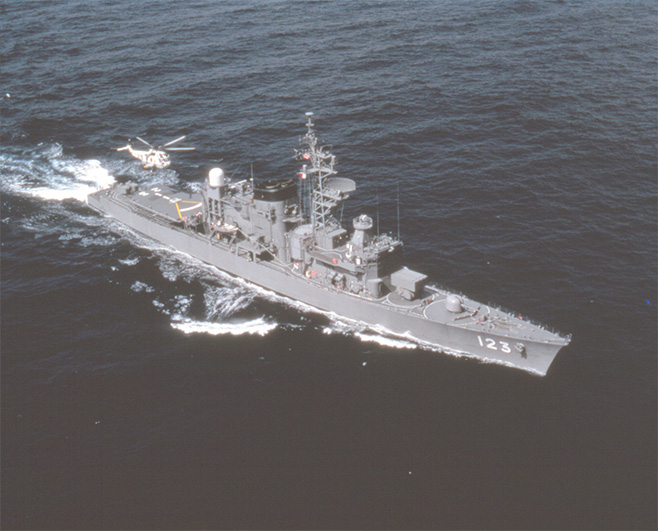
Convoy ship equipped with gas turbines
-
1982/ Showa 57
Construction of world’s largest (at the time) controllable pitch propeller
We constructed a controllable pitch propeller that had a diameter of 11 m and three blades with a rotation speed of 45 rpm. It was recorded as the propeller with the world’s largest dimensions in the Guinness World Records.
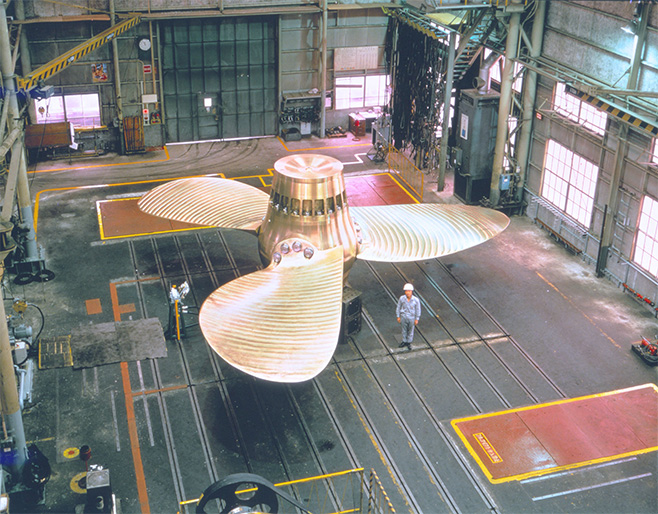
CPP with propeller diameter of 11 meters
-
1983/ Showa 58
Completion of the first Rexpeller azimuth thruster.
We completed the first Rexpeller azimuth thruster developed by our company. Since then, we reached a total of 1000 units produced in 2018. The Rexpeller is a fully rotatable propeller that can provide thrust in any 360-horizontal direction, giving it the functionality of both a propeller and a rudder. Because it gives a high amount of maneuverability to ships, it is currently used primarily on ships such as tugboats, supply boats, specialized work vessels, and self-elevating platform (SEP) vessels.
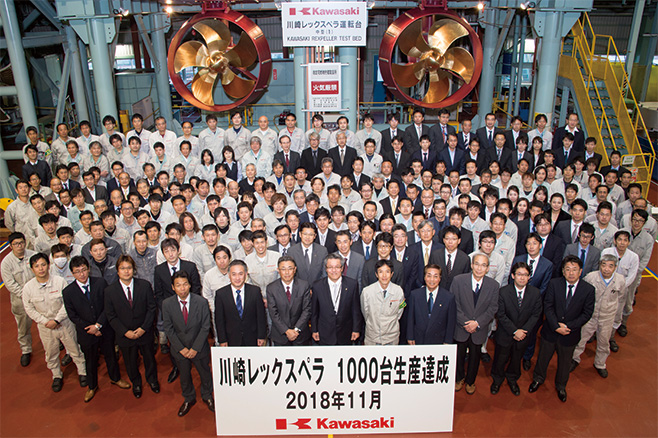
Commemoration of producing 1000 Rexpeller units
-
1986/ Showa 61
Delivery of the first joystick integrated control system, KICS
KICS (Kawasaki Integrated Control System) is a system that enables the integrated control of multiple vessel elements, such as controllable pitch propellers, azimuth thrusters, side thrusters, and rudders. We delivered the first KICS unit for a ferry.
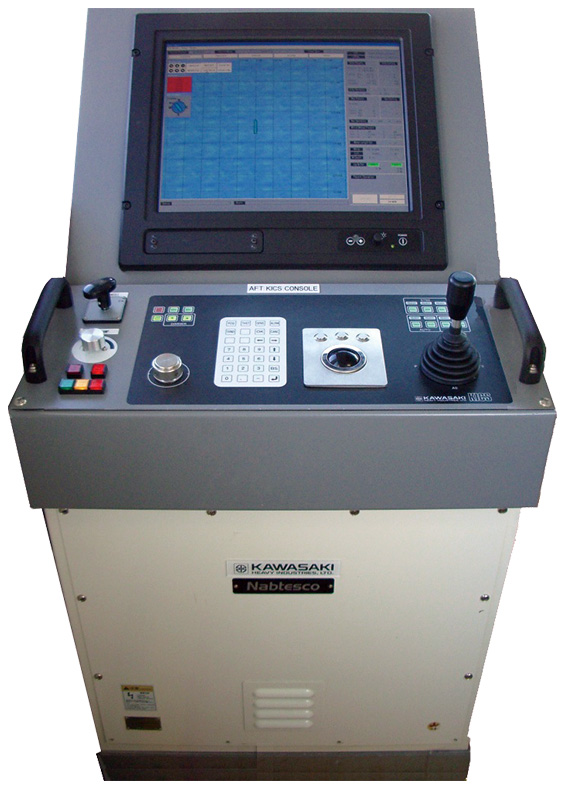
KICS integrated control system
-
1988/ Showa 63
Delivery of the first Kawasaki-developed 12V25/25S diesel main engine for submarines
We delivered the first 12V25/25S engine developed by our company as a main engine for submarines.
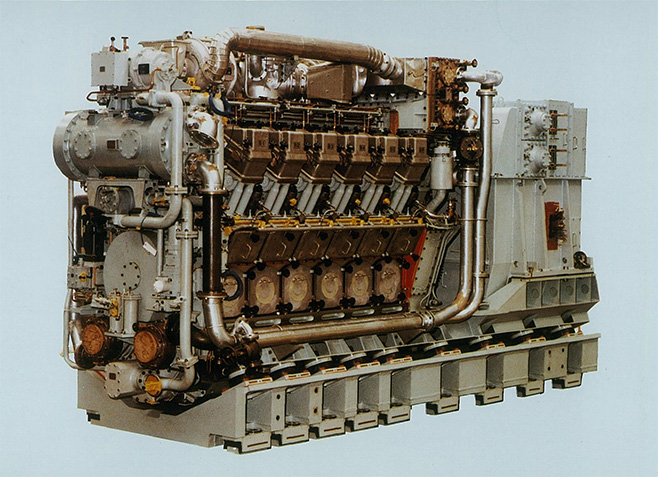
Kawasaki 12V25/25S submarine diesel engine
-
1993/ Heisei 5
Commercialization of the 6 MW class M7A-01 industrial gas turbine for a cogeneration system
Since starting development on industrial gas turbines in 1972, we have used in-house technology to develop gas turbines for various uses. Among these, we completed development of the M7A-01, a medium-sized high-efficiency 6 MW class gas turbine for cogeneration with best-in-class thermal efficiency.
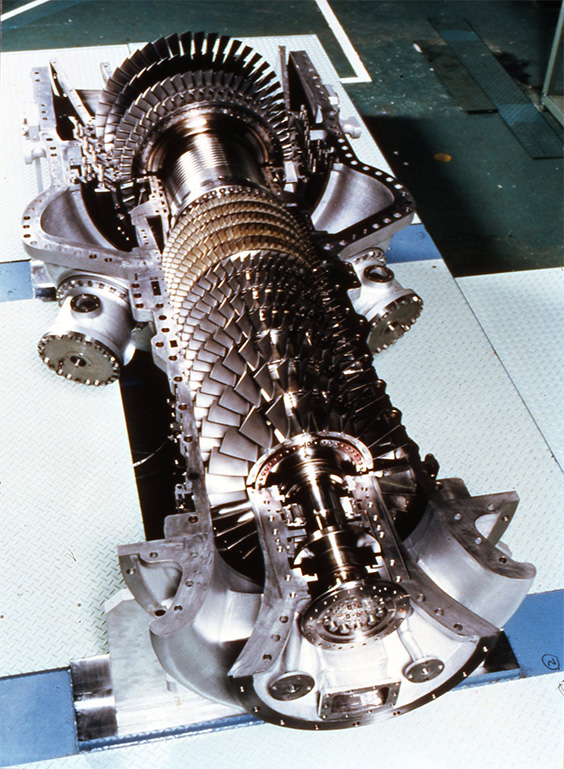
M7A-01 gas turbine
-
1995/ Heisei 7
Establishment of Wuhan Kawasaki Marine Machinery Co., Ltd. (WKM)
We established Wuhan Kawasaki Marine Machinery Co., Ltd. (WKM) jointly with Wuhan Marine Machinery Plant Co., Ltd., with which we had a collaborative relationship for electro-hydraulic steering gears, and we started producing side thrusters in China.
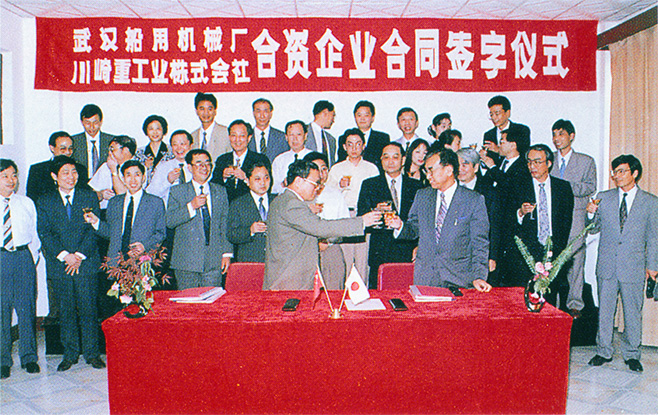
Contract signing ceremony for establishing the joint venture company
-
2001/ Heisei 13
Delivery of six extra-large Rexpeller azimuth thrusters for deep-sea scientific drilling vessel, Chikyu
We contributed to the construction of the deep-sea scientific drilling vessel Chikyu, which has the world’s top-class drilling power, by delivering six 4,200 KW extra-large Rexpeller azimuth thrusters.
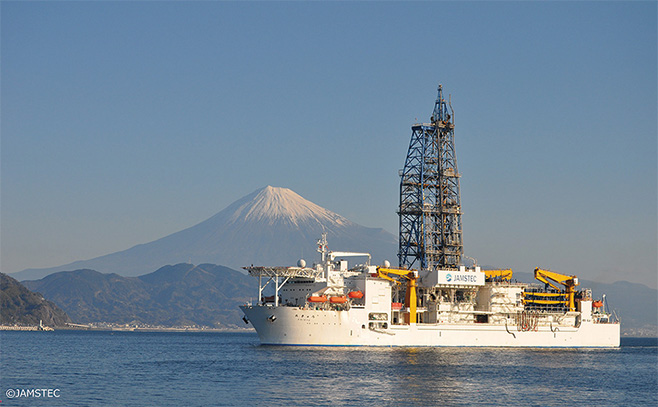
Deep-sea scientific drilling vessel, Chikyu
-
2005/ Heisei 17
Delivery of world’s largest trisonic wind tunnel
We delivered the world’s largest trisonic wind tunnel to the Japan Defense Agency's Sapporo Test Center. As a pioneer in wind tunnel manufacturing, we have produced a wide range of wind tunnels, from low-speed to supersonic, for various sectors, including aircraft, projectiles, civil engineering, architecture, environment, automobiles, and rolling stock.
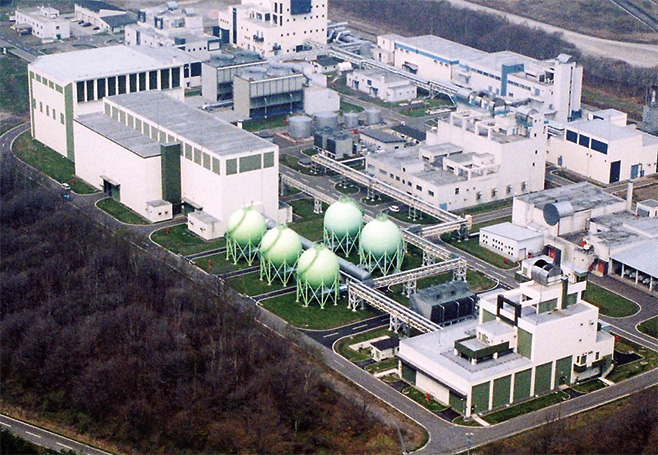
Trisonic wind tunnel
-
2006/ Heisei 18
First in world to achieve a cumulative production total of 100 turbines for LNG carriers
Since delivering steam turbines as the main engine for liquefied natural gas (LNG) carriers in 1977, we have produced the largest number of engine turbines in the world. In 2006, we reached a cumulative total of 100 engine turbines produced for LNG carrier turbines.
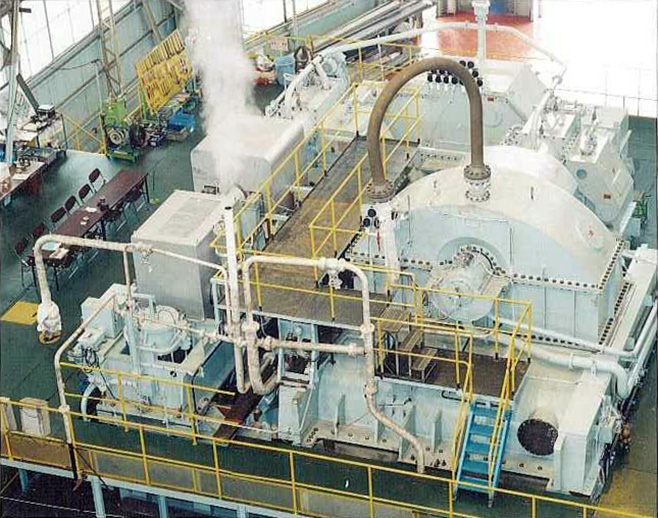
UA-400 type marine main turbine
-
2007/ Heisei 19
Delivery of first MAG Turbo single-stage turbo aeration blower
By combining inverter-controlled rotation speed and inlet vane control, this aeration blower (fan) with magnetic bearings achieves high part-load efficiency and a wide air flow control range. We developed the blower in-house, and the first unit was delivered to a sewage treatment facility in Gifu City. Since then, we have accumulated orders for units to be used in sewage treatment facilities all over the country, and reached a cumulative total of 200 orders by 2019.
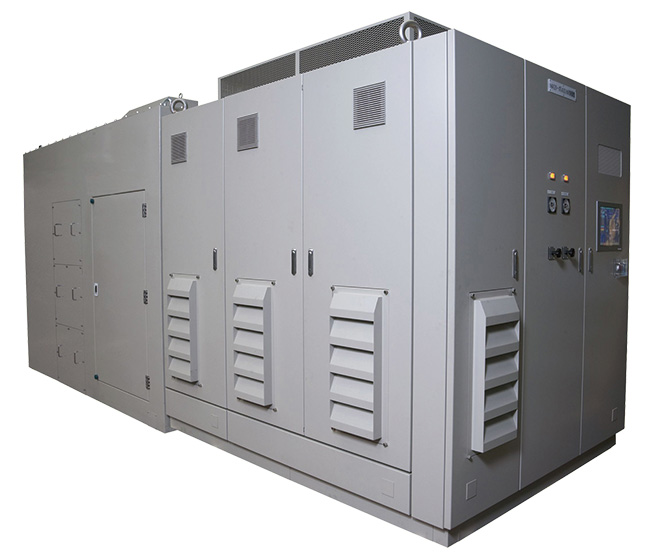
MAG Turbo
-
2007/ Heisei 19
Completion of 7.8 MW power-generating gas engine with world-class power generating efficiency
As environmental regulations became stricter from the 2000s, there was a shift from diesel engines that use liquid fuel to gas engines fueled by natural gas, significantly reducing the emission of harmful substances such as CO2, NOx, and particulate matter. During this transition, our company developed a Green Gas Engine with the world’s highest class power generation efficiency. With its superior power generating efficiency and environmental performance, the Green Gas Engine went on to capture the top market share in Japan.
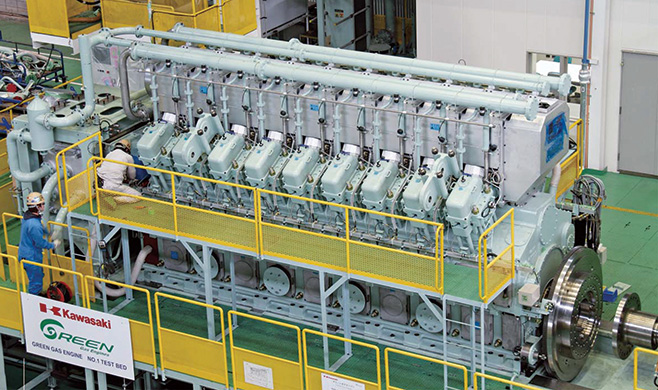
Kawasaki Green Gas Engine
-
2014/ Heisei 26
The L30KG marine gas engine becomes first Japanese-made engine to acquire type approval from the DNV in Norway
In anticipation of the International Maritime Organization (IMO) regulations on CO2, NOx, and SOx emissions, we utilized technology from the Green Gas Engine to develop the L30KG marine gas engine. This engine is the first domestically-produced gas engine to receive type approval from Det Norske Veritas (DNV) in Norway. The L30KG achieves performance that significantly exceeds the NOx Tier III regulations without the need for special equipment such as denitrification devices. It also significantly reduces CO2 and SOx emissions compared to diesel engines, allowing it to contribute to the construction of vessels that comply with various environmental regulations.
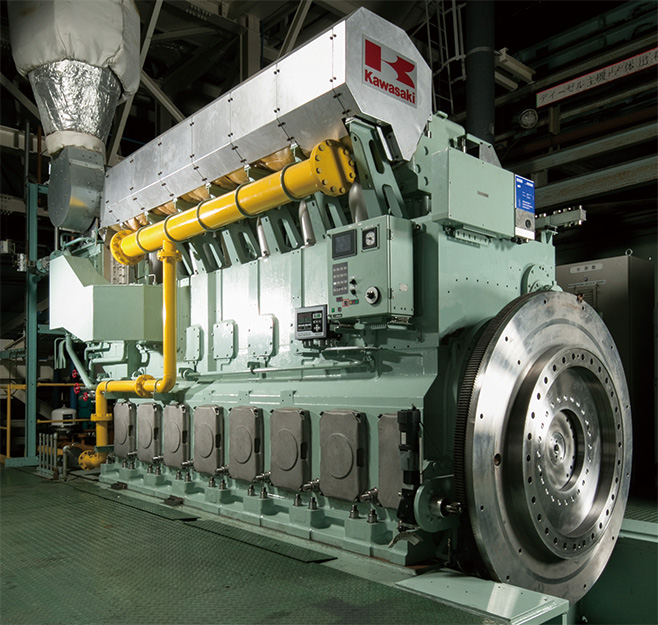
L30KG marine gas engine
-
2015/ Heisei 27
Completion of K-ECOS, the world’s first environmentally-friendly low emission system to be installed on a marine diesel engine
Kawasaki developed the world-leading K-ECOS (Kawasaki-ECO System), a system that combines multiple environmental technologies to effectively reduce air-polluting NOx and CO2 emissions from marine diesel engines.
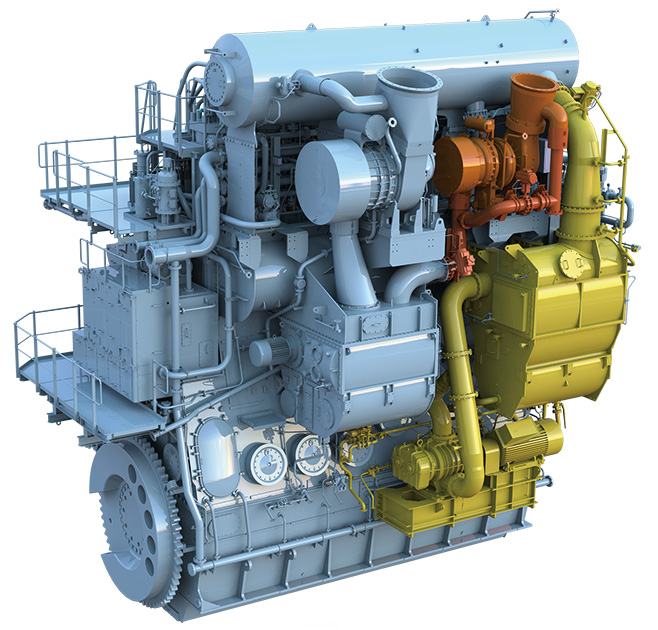
First K-ECOS for commercial use
-
2018/ Heisei 30
World’s first successful supply of heat and power using a 100% hydrogen-fueled gas turbine in an urban area
As part of a project subsidized by the New Energy and Industrial Technology Development Organization (NEDO), we succeeded with the world’s first simultaneous supply of heat and power to four nearby facilities on Port Island, Kobe City, using a gas turbine fueled solely by hydrogen.
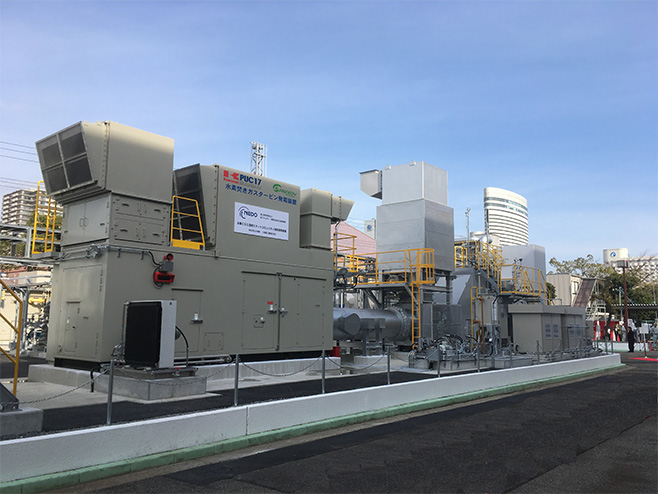
Hydrogen cogeneration system
(Port Island, Kobe) -
2020/ Reiwa 2
Delivery of first 100 MW class combined cycle power plant developed by Kawasaki
This combined cycle power plant (CCPP) employs the L30A model 30 MW class made-in-Japan high-efficiency gas turbine, which has the highest output of all of Kawasaki gas turbines. The first unit has been delivered to South Kashima Power Plant Inc. (headquarters: Kamisu, Ibaraki Prefecture).
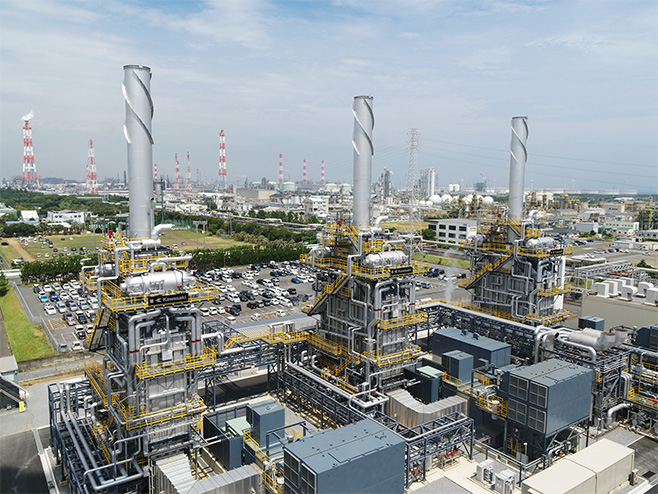
100MW-class gas turbine combined cogeneration facility
-
2023/ Reiwa 5
Delivery of world’s first gas engine hybrid promotion system for bulk carriers
We delivered a gas engine hybrid propulsion system that combines a natural-gas engine and large-capacity batteries. This is the world’s first delivery of a hybrid propulsion system for a bulk carrier that utilizes a gas engine as the main means of propulsion.
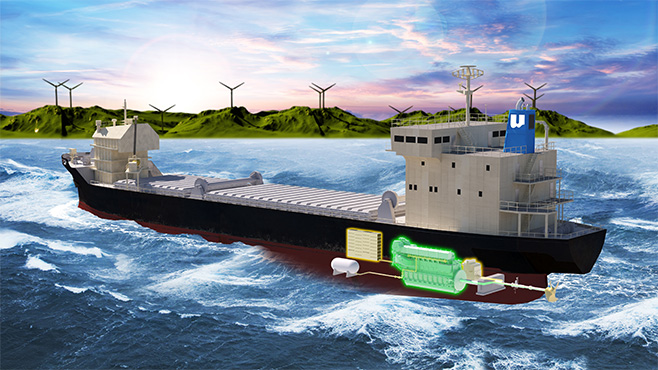
Gas engine hybrid propulsion system